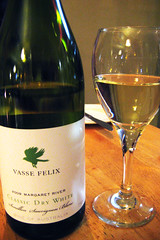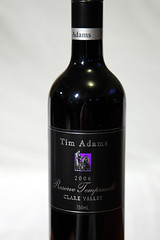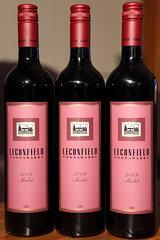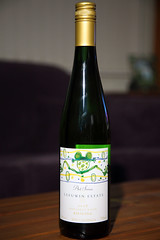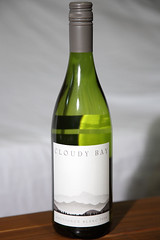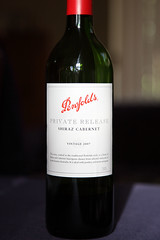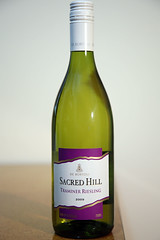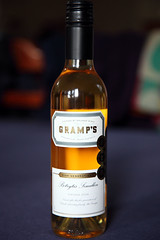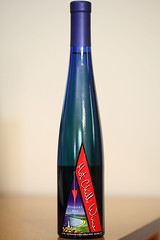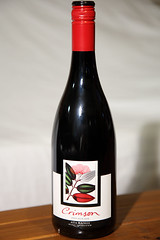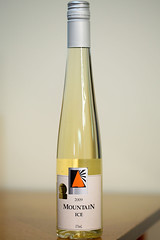You probably know I’m in the process of trying to increase my knowledge and experience of wine. As it turns out, a bunch of my friends would also like to do this. So we are holding a wine tasting evening tomorrow night!
Being the irrepressible geeks that we are, we have worked out something moderately close to a double-blind wine tasting protocol, which goes roughly as follows:
- Decide on a set of wines to try and buy the bottles.
- Assemble for the tasting.
- Take the wines into a secret room, with an equal number of decanters.
- Under coloured light (to conceal the colour of the wines), one person pours each bottle into a decanter, and labels the wines and decanters with matching letters.
- A second person writes down a mapping from letters to numbers, and replace the letters on the decanters with numbers based on the mapping.
- The decanters now contain numbers that can be mapped back to the wine bottles, but no person knows the mapping! Bring them out to the common room.
- Pour and taste the wines, making and comparing notes amongst the participants. Each person will have six wine glasses so they can have a sample of every wine in front of them at once. The idea here is that this will help us pick up some of the differences between the wines, and the less experienced tasters can learn how to describe them from the more experienced tasters.
- Reveal the wines in each decanter, so we can learn what aromas and flavours are associated with which styles.
After the tasting, we will be having dinner and playing games and stuff. And we’ll have spittoons for the tasting. We don’t want anyone driving home intoxicated.
Here’s the list for the first tasting event: White grape varietals:
- Wither Hills 2009 Wairau Valley Sauvignon Blanc
- Brokenwood 2008 Hunter Valley Semillon
- Wynns 2008 Connawarra Estate Riesling
- Gramp’s 2006 Barossa Chardonnay
- Brown Brothers 2009 King Valley Pinot Grigio
- Pewsey Vale 2008 Eden Valley Gewürtztraminer
We’re sticking with Australian and New Zealand wines for the first few events. Next time we’ll do red varietals, and then we can move on to international varieties, or perhaps try tasting a set of different vineyards, vintages, and prices for one style.
Should be fun! I’ll report on anything interesting we learn from the experience.


